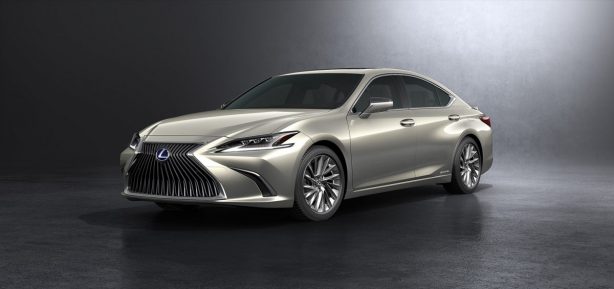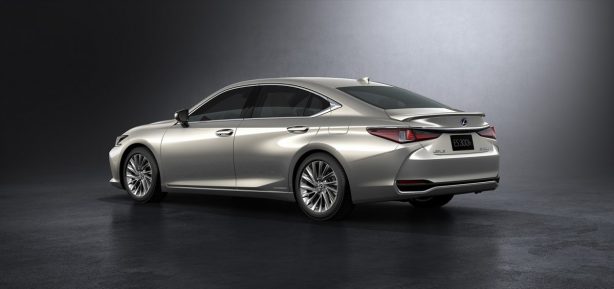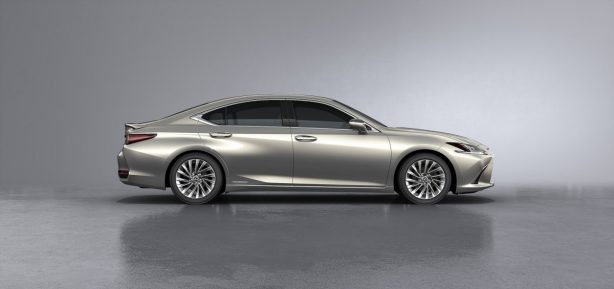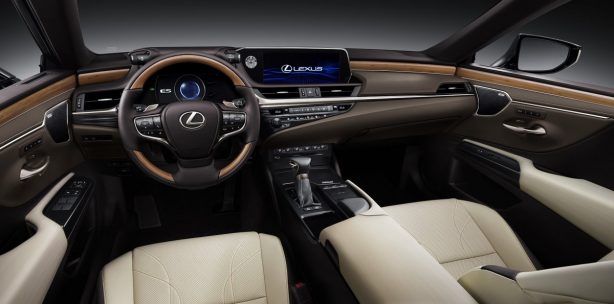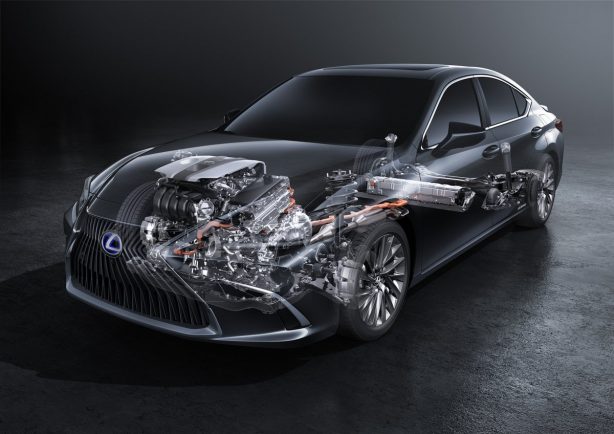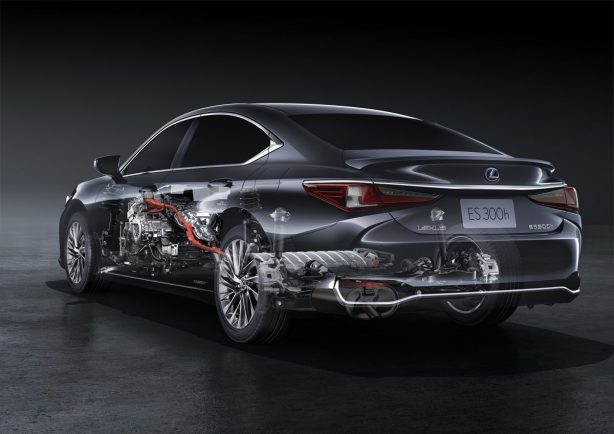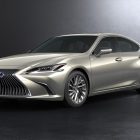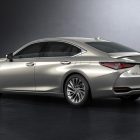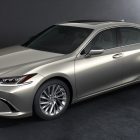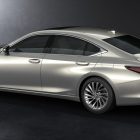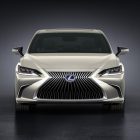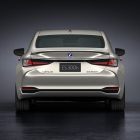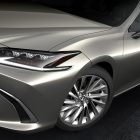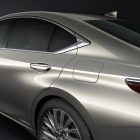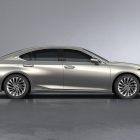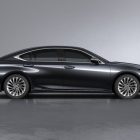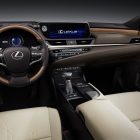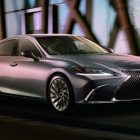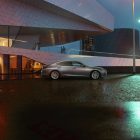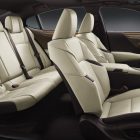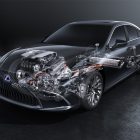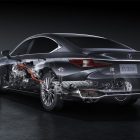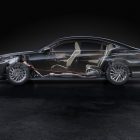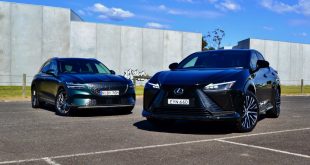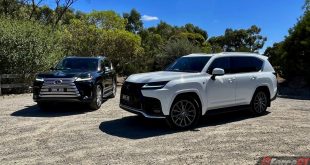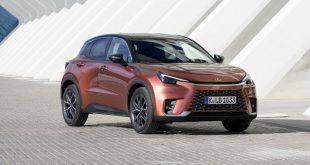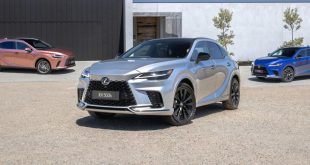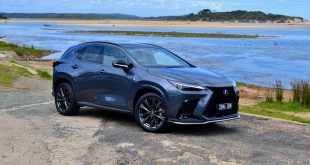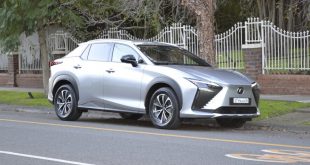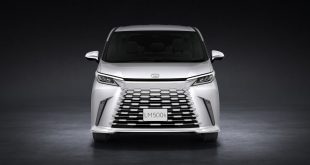Lexus has announced the next-generation ES mid-size sedan will be offered exclusively as a hybrid range when it arrives in Australia in Q4, 2018.
Lexus Australia chief executive Scott Thompson said, offering an advanced hybrid system as the sole powertrain aligned with the brand’s global direction of recasting the traditional image of the ES into one that is new and unexpected.
“In Australia, hybrid accounts for 30 per cent of Lexus sales, so offering the latest generation ES solely with an advanced self-charging hybrid system represents another significant milestone towards greater electrification of our line-up,” Mr Thompson said.
Built on the all-new Global Architecture – K (GA-K) platform, the new car is longer (+65mm), lower (-5mm) and wider (+45mm) with wheels that have been pushed closer to the corners thanks to a 50mm longer wheelbase and wider tracks front (+10mm) and rear (+37mm).
Project chief designer Yasuo Kajino described the look of the ES as “provocative elegance”. He said: “The ES has always been an elegant luxury sedan. For this generation, we have added daring design elements that challenge the traditional expectations of buyers.”
To create a dynamic yet fluid shape, Kajino’s team used the low bonnet enabled by the new ES platform to produce a distinctive silhouette emphasised by an aggressive downward slant.
Up front, the face of the ES is dramatically different with the ES 300h using elegant vertical bars that radiate out from the centre.
READ NEXT: 2018 Lexus UX small SUV unveiled
In a break with ES models of the past, the seventh-generation design uses a fast roofline that emphasises its lower stance and slippery aerodynamics. The rear end is clean and sharply chiselled. LED tail lamps wrap around the quarter panels to provide a continuous styling line from any angle. There are two different wheel designs (17 and 18-inch).
Inside, the driver’s focus is kept on the road ahead by placing the centre display screen, instrument panel and head-up display in a tight cluster in the driver’s field of view.
Adjustments to the steering wheel angle and position and to the brake pedal angle and location is said to provide the driver with a natural driving position.
Front passengers, on the other hand, get a more open and spacious environment that promotes relaxation.
Rear-seat passenger comfort has long been a hallmark of the ES and the seventh-generation model prioritises rear package capability despite the sleeker exterior roofline. A lower hip point and a carefully configured headliner preserve headroom while the longer wheelbase delivers uncharacteristically generous legroom.
Lexus says the interior colours and materials give the cabin a modern, yet warm look and feel with a hand-crafted appearance that luxury buyers expect in this category.
A new era of performance
The engineering team led by Yasuhiro Sakakibara had one clear goal: to transform the image of the ES. It meant turning a sedan known primarily for its comfort and quietness into one that is equally capable of delivering class-leading handling and power.
Sakakibara-san said this ES was built to deliver a fundamentally higher level of performance than any of its predecessors. The starting point was the new, exceptionally rigid front-wheel-drive chassis. Various grades of high-tensile steel reduce weight versus previous platforms.
READ NEXT: A week with the Lexus LC 500 Coupe
Additional enhancements like an all-new multilink suspension design, rack-mounted electric power steering and a V-brace mounted behind the rear seat gave the engineers the flexibility to tune the ES with a new-found level of precision. The platform enabled low and wide proportions, resulting in a lower centre of gravity and improved aerodynamics.
The new hybrid system couples an ultra-efficient, Atkinson cycle 2.5-litre four-cylinder petrol engine with a lighter, more compact, more power-dense electric motor and self-charging hybrid system. Together they deliver a combined 153kW and better than 6.0 litres/100km in claimed combined driving.
The all-new petrol engine incorporates fast-burn combustion technology that is claimed to be one of the most thermally efficient engines in a production vehicle. The result is more power without increasing emissions or fuel consumption. Various methods were used to achieve the results including straight intake ports, increased valve angles and laser-clad valve seats. A variable capacity oil pump, multi-hole injectors, VVTi-E on the intake valves and a variable cooling system also contribute to the engine’s heat and combustion management.
Overall drivability of the ES 300h is said to have been improved thanks to a more sophisticated hybrid system control computer that is better able to mimic the feel and power delivery of a standard petrol engine. The nickel-hydrogen battery is smaller, allowing it to be mounted underneath the rear seat so it doesn’t infringe on boot space.
All versions of the new ES feature the new Lexus Safety System + 2.0 as standard. It includes daytime cyclist detection which is part of the comprehensive pre-collision system (PCS). Already capable of detecting oncoming vehicles and pedestrians, the PCS’s ability to detect cyclists addresses one of the most common accident scenarios on the road today. PCS has also been enhanced to better detect pedestrians at night by increasing the radar’s sensitivity and dynamic range.
ES offers a two-stage adaptive high beam system that can turn the high beams on and off automatically. Its 24 individual LED light array is capable of adapting the light pattern to provide enhanced illumination while reducing glare for oncoming drivers.
The new ES 300h will be offered in both Luxury and Sports Luxury grades in Australia.
 ForceGT.com Car News, Car Reviews, Video Reviews, Tuning and much more.
ForceGT.com Car News, Car Reviews, Video Reviews, Tuning and much more. 